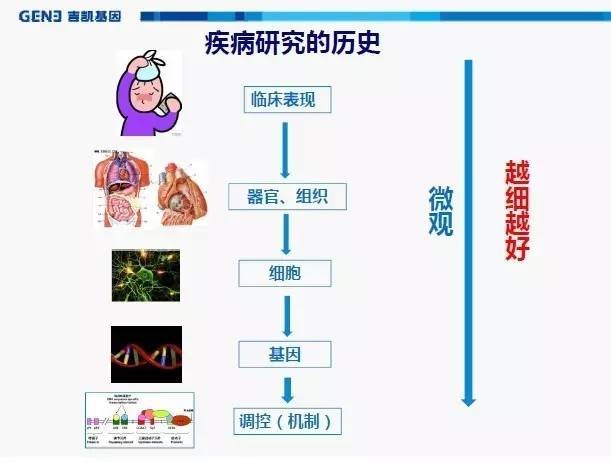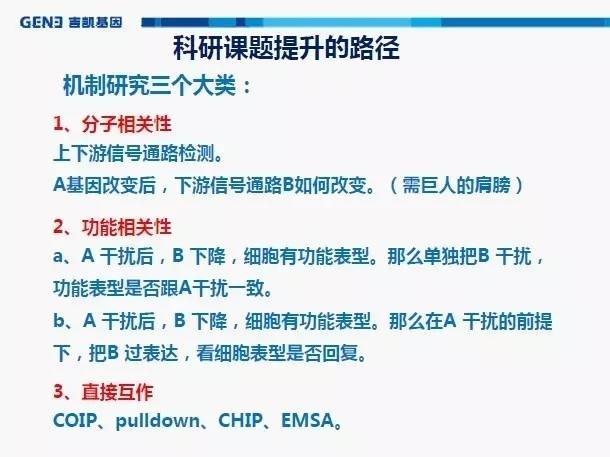Looking for innovation in the National Natural Science Fund from the historical process of disease research
The National Natural Science Foundation's first-instance peer review points, the first sentence of the first article, “emphasizes the innovation of the application project and clearly points out the research value and innovation of the project.†The annual non-winning project has the most innovative problems. Moving out of Jibo's treasure map, we still find the answer from the history of disease research. First, clinical manifestations Here is the description of the incidence of disease, mortality, clinical treatment and effects. 1. Incidence and mortality are objective data, and the scope of epidemiological research will now be combined with susceptibility factors. 2. Clinical treatment methods and effects. Multicenter clinical treatment assessment. The team of Xie Peng from Chongqing Medical University on the treatment of adolescent depression is different from that of adults. This article belongs to this category (the article was published in lancet.) At present, the research on drug concomitant diagnosis in the field of precision medicine is also in this category. 3. Today I saw a WeChat, depression is related to immunity. The source of this idea is to treat inflammation-inhibiting drugs in rheumatoid arthritis, and the symptoms of depression in these people will improve. Originally thought to be unrelated clinical manifestations, combined to tap the inner link. Also belongs to this category. Research in this category is close to the clinic. The goal of the study was NEJM, Lancet. Second, organs, tissues With clinical manifestations, human studies of disease, first of all, may be a problem with organ tissue. The disease is located in a sputum, and many diseases are clear. Here, the innovation is mainly to find new organ tissue pathological changes, or new types of changes in known organ tissues. For example, IgG4-related diseases are similar to tumors in imaging, and are easily misdiagnosed as tumors. It is not a tumor when surgical treatment is found. The accumulation of IgG4 in certain organ tissues is the point of study. Lupus erythematosus nephropathy, an autoimmune disease in which the immune system attacks its own cells. Kidney damage is a consequence. However, these are known. If you can find that other organ or tissue damage in patients with lupus erythematosus has not been reported, and you can prove that the damage is related to lupus erythematosus, then it is innovative. The immunity and depression mentioned above. Studying in the brain, immunization affects the nervous system. Summary: This level. Disease-related organ tissue changes, and new disease-related organ tissues or known disease organ tissues are found to be different from the past, and innovation is made. Third, the cell In the lecture, this level contains two points. 1. What cells are involved in the development of the disease. 2. This cell disease is not the same as normal (change type). A small piece of tissue contains a wide variety of cell types. 1. Discover a new cell group associated with the disease . There are more cases in this area. Take the tumor alone. For example, the discovery of cancer stem cells is still a hot spot so far. A double-edged sword for tumor blood vessels, tumor survival and treatment. Tumor-associated fibroblasts, tumor microenvironment. Tumor-associated macrophages, tumor immunity, tumor immune microenvironment, and now hot spots. For another example, epilepsy, it is conventional to think that neurons are abnormally discharged. It is now believed that glial cells are involved in the pathogenesis of epilepsy. Moreover, glial cell immune changes are one of the causes of epilepsy. It is said that depression is now found to be related to immunity. If you are doing a depression study, do you think about the immune changes in glial cells in depression? 2. Types of disease-related cell changes . Also take the tumor to say things. Tumor research began with the study of malignant proliferation of tumors and proliferation as a type of change. Later, tumor metastasis was found to be the most terrible. Tumor cell EMT changes were excavated. Now, tumor cells change autophagy, tumor cell metabolism changes, and so on. All belong to this category. Translation regulation is now a new research hotspot after splicing. Regardless of whether you are studying sputum or not, see if the disease you are studying is related to these hot spots (however, these hot spots are different from the previous autophagy and metabolic sputum, and need to have clear genes). Summary: 1, the discovery of new disease-related cells. 2. Discovery of new types of changes in known disease-associated cells. Fourth, the gene People's genes are less than 20,000. For a disease, how many related genes, except for single-gene genetic diseases, other diseases, at least no one now dares to say that he is very clear. Existing disease research, in fact, the greatest amount of innovation comes from this level. For example, tumors, for the different disease cells to explore what new genes are involved. The tumor cells themselves, the 啥 gene regulates proliferation and apoptosis. The 啥 gene regulates EMT. Tumor blood vessels, sputum genes regulate the activation of vascular endothelium. Tumor immunity, 啥 gene regulation of immunosuppression, even if PD-1, PD-L1 is already clear. The 啥 gene regulates the up-regulated expression of PD-L1 in tumor cells. The 啥 gene receives PD-1 signals in immune cells and ultimately leads to suppression of immune cells through the sputum pathway. The innovation here must be the function of this gene. No one has studied the type of cells I have studied and the type of cell changes. Summary: Looking for a new functional gene that has not been reported in the type of disease cell I am studying, the type of change (if the gene has not been reported in this disease, it is best). Fifth, the mechanism This is the most confusing place. The clinical relevance of the gene has been reported, and the function of the gene has also been reported. For a downstream signaling pathway, is this innovation? 1, count. However, if it is only a demonstration of molecular correlation (unclear listening lectures, this article is attached to the PPT), a small article can be made, the applicant country is natural, and the innovation is not enough. 2. If you have conducted a functional correlation argument, say if you have no data, who believes in you. If you have data, you have already proved it initially. The research content is written, clinical relevance, and function have been reported by others. 3. Direct interaction mechanism argumentation. This is very powerful, the direct interaction mechanism is the requirement of more than 10 points for the rigor of the mechanism argument. However, such innovations are generally science projects. (A teacher who knows Jibo, applying for a clinical tender, the first year of the mechanism is written according to the requirements of the scientific mouth, and the result is a pile of advanced scientific questions. Because there are many experts in the first clinical trial, the research ability is not Experts below the scientific mouth, take their own short board, the results can be imagined. In the second year, listening to Ji Bo's suggestion, the tender focus on the relationship between genetics and disease, this innovation point, get a face .) 4. The new subdivision direction of the mechanism. The clinical relevance and function of the gene have been reported. For example, the A gene is highly expressed in lung cancer tissues, and the A gene inhibits proliferation after interference in lung cancer cells. My research found that the A gene can promote anaerobic glycolysis. Others have not said that this gene is associated with anaerobic glycolysis. OK, the mechanism is deep. In fact, the innovation is that this gene can regulate anaerobic glycolysis, as a science project. However, as a clinical oral project, the writing of the tender must be based on the study of A gene to promote the malignant proliferation of lung cancer cells by anaerobic glycolysis. However, there is a case in which the A gene has not been reported to be associated with anaerobic glycolysis in tumors, but has been reported in other diseases. Is this innovative? The answer is, count, but the A gene is reported in association with anaerobic glycolysis, and anaerobic glycolysis and tumors are reported. Innovation is a little bit smaller. If this segmentation mechanism is related to tumors, no one has reported it, just as it was the relationship between autophagy and tumor, it would be best. Summary: Institutional innovation is the most complex and the most easily misleading reviewer. First evaluate whether the innovation point meets the requirements of the country's nature. If it is OK, it must be described in the bidding. Because the subject is the most innovative, and the most obvious is the innovation of the gene, once the gene is reported in the disease, in order to avoid misleading experts, we must describe our own innovation points. Attached, the mechanism studies three major categories. PS: I hope that friends who have more exchanges with Jibo in learning and experimentation can pay attention to the "Jikai Gene" WeChat public account and reply to the word "Jibo".
Volsen owns a professional custom synthesis department, with more than 15 senior scientific research chemical personnels who have a graduate degree or above. We also have an independent scientific management system. Our company integrates years of production experiences and talent reserves that forms a strong R&D production capacity, furthermore we could undertake various chemicals customizations from kg to ton relying on the existing production base and equipment.
With the accumulated strong expertise,and experiences of developments,we have developed the products with good quality and also manufactured the intermediates for multi-national pharmaceutical company. R&D Pharmaceutical, Research And Development Pharmaceutical, Bulk Drug Development Taizhou Volsen Chemical Co., Ltd. , https://www.volsenchem.com
Baidu Encyclopedia describes "Innovation is a conceptual process characterized by new thinking, new inventions and new descriptions. It originated in Latin and has three meanings: first, update; second, create new things; Third, change."
In our innovation, what is innovation, or what can be considered as innovation. 


Long press and pay attention
